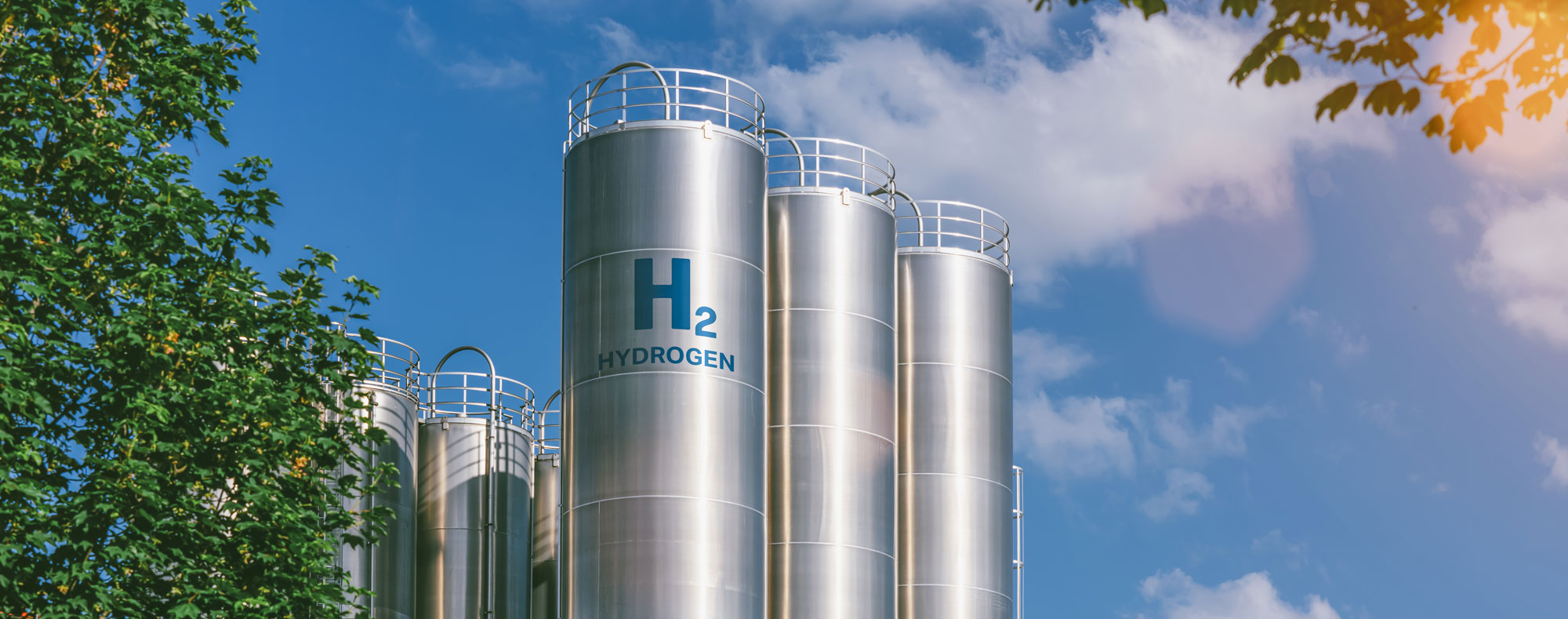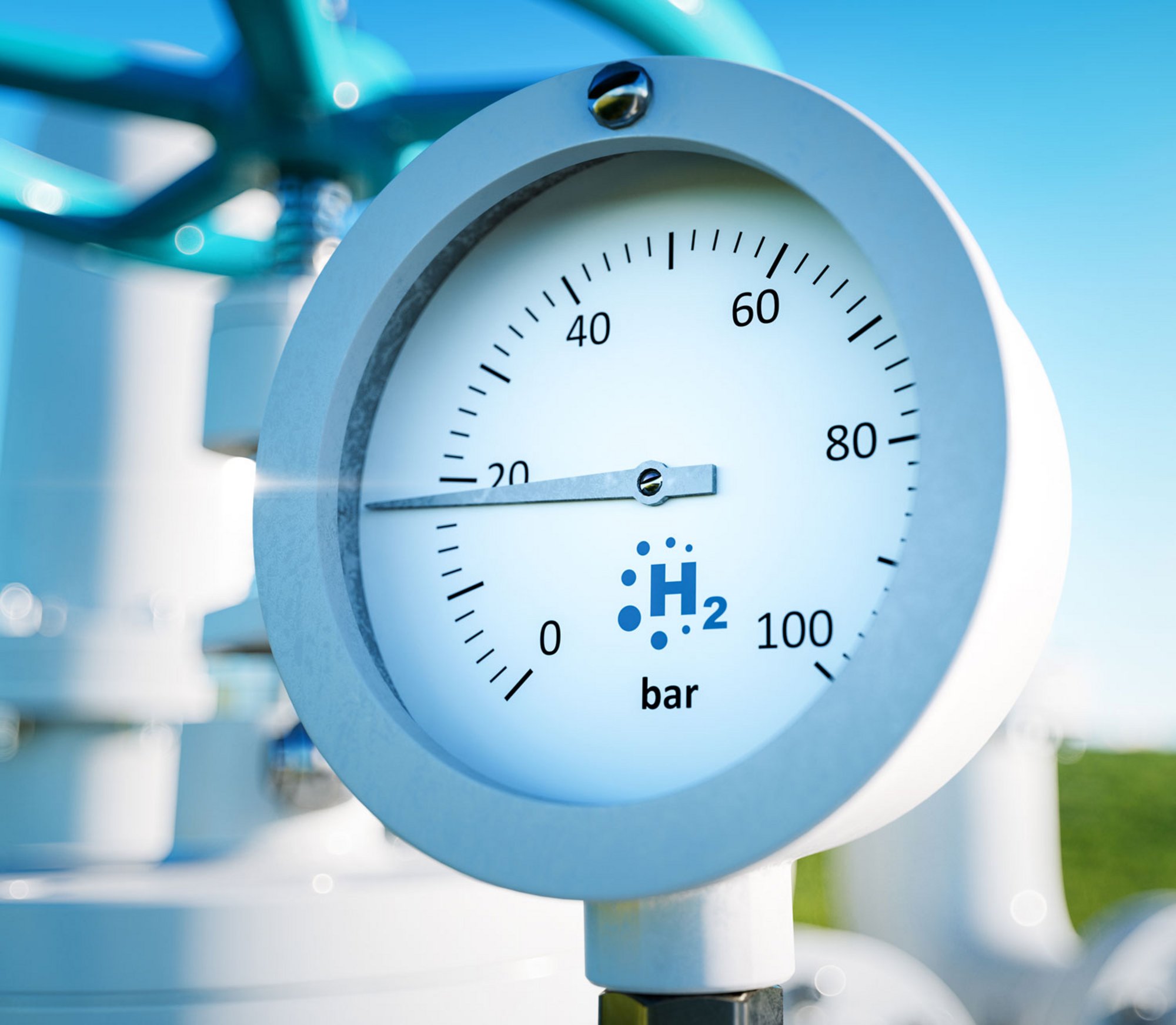Properties
Hydrogen is a colourless and odourless gas at room temperature that is about 14.4 times lighter than air. It is the element with the lowest density, so hydrogen diffuses easily through porous partitions, but also through metals such as platinum. The No. 1 element has the lowest melting and boiling temperature after helium. As a rule, hydrogen occurs in a diatomic molecular form (H2). There are three natural isotopes: A normal hydrogen atom (isotope protium) consists of a proton and an electron. In contrast, heavy hydrogen (isotope deuterium) has an additional neutron and superheavy hydrogen (isotope tritium) has two neutrons. The isotope deuterium has a low proportion of approx. 0.015% in natural hydrogen. While pure hydrogen is not toxic to the human organism, heavy hydrogen and heavy water (deuterium oxide) are considered highly toxic.
Hydrogen atoms occur in bound form in numerous compounds, e.g. in water or in organic compounds such as hydrocarbons (methane, ethane, benzene), alcohols (methanol, ethanol), aldehydes, acids, fats, carbohydrates and proteins. Hydrogen atoms are very common in the human body and are involved in many important metabolic processes such as digestion.
Hydrogen molecules occur in two different chemical states, ortho-hydrogen and para-hydrogen. These differ in the orientation of their atomic spin. Spin refers to the angular momentum of the elementary particles of an atom. Ortho-hydrogen has a parallel spin, while para-hydrogen has an anti-parallel spin. Para-hydrogen has a lower specific heat capacity than ortho-hydrogen. At ambient temperature, ortho-hydrogen is three times more abundant than para-hydrogen. A mixture of 25% para and 75% ortho hydrogen is called normal hydrogen (n-H2). Below -200 °C, para-hydrogen is almost exclusively present. The mixture of para-hydrogen and ortho-hydrogen, which occurs according to the respective thermodynamic state, is called equilibrium hydrogen. The conversion from one state to the other is a slow process that can take several days without the presence of catalysts. Using magnetocaloric processes, a conversion from ortho to para hydrogen can take place in several stages until a para hydrogen content of over 95 % is reached.
In air, hydrogen burns to water with a faint bluish flame:
2 H2 + O2 =>2 H20 H = 572 kJ/mol
Mixtures with oxygen or with chlorine gas explode very violently when ignited and are called oxyhydrogen mixtures. In the laboratory, hydrogen is detected with the oxyhydrogen gas sample. This sample is also used to check whether an oxyhydrogen gas mixture is present in a gas. If a loud whistling bang sounds, it is an oxyhydrogen gas; if there is a harmless, muffled sound, there is only pure hydrogen in the test tube. Hydrogen forms hydrides with alkali or alkaline earth metals in exothermic reactions.
Manufacture
A number of processes are used to produce hydrogen. Since hydrogen only occurs in nature in bound form, the use of primary energy is required to produce it. Worldwide, about 500 billion standard cubic metres of hydrogen are converted per year, 40 % of which is produced in the chemical industry as a by-product, for example in the production of chlorine by means of chlor-alkali electrolysis or from crude oil refinery processes. The vast majority of the hydrogen produced comes from fossil energy sources, from the catalytic steam splitting of methane (natural gas reforming), the partial oxidation of heavy oil (diesel) or the gasification of coal. These production processes based on carbon-containing starting components produce CO2. The production of hydrogen by electrolysis of water made electrically conductive with sodium hydroxide solution or sulphuric acid allows a regenerable emission-free energy chain when wind, water or solar energy is used. Hydrogen can be produced just as emission-free but expensively from a series of chemical reactions with water, for example from the reaction of alkali metals and water. Other production processes are at the research and development stage, such as autothermal reforming, the Kværner process, gasification of biomass or organic waste, and high-pressure electrolysis. Research is also being conducted into methods for hydrogen production through biological processes.
Application
Our current energy supply is mainly based on the use of limited supplies of fossil fuels, which consist of a range of short- to long-chain hydrocarbon compounds. The generation of energy by burning hydrocarbon-containing substances in air, which has accompanied the technical development of mankind since the harnessing of fire, causes the formation of the greenhouse gas carbon dioxide and various pollutants such as hydrocarbons, nitrogen oxides and soot due to the process.
Hydrogen can be burnt in combustion engines largely without pollutants; neither carbon monoxide, carbon dioxide nor hydrocarbons are produced, and the emission of nitrogen oxides can be kept low. If hydrogen is used in a fuel cell, it provides electrical energy in a "cold combustion" without emitting pollutants or noise. However, a number of economic and technical issues still need to be resolved before hydrogen can be used industrially as an energy carrier to generate electricity in fuel cells or to power vehicles in fuel cells or internal combustion engines.


